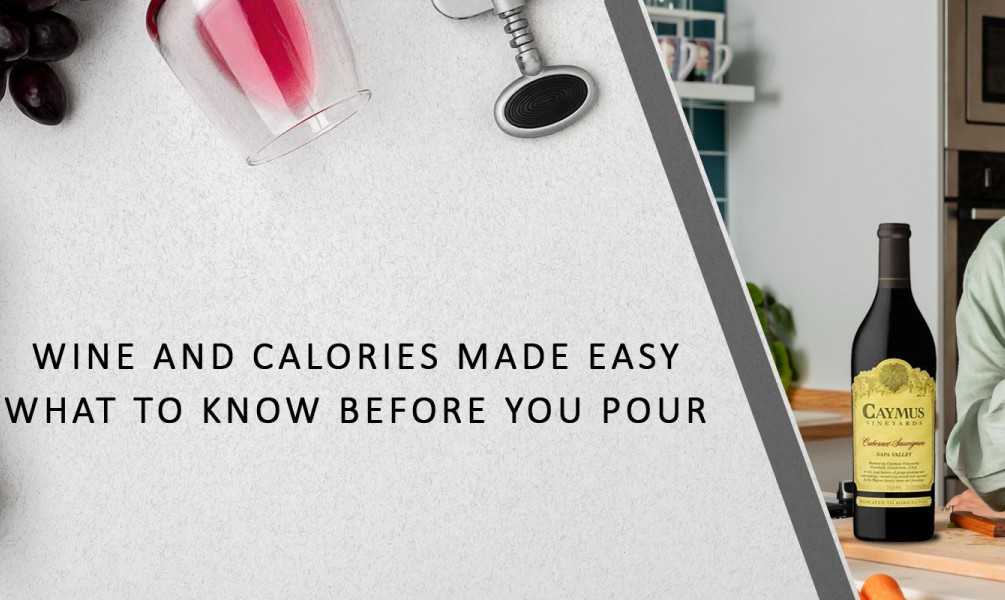
Ever wondered how many calories are hiding in your glass of wine? You're not alone. Whether you're trying to make more mindful choices or just curious about what's in your evening tipple, understanding wine calories doesn’t have to be complicated (or boring). From a splash of Sauvignon Blanc to a cozy glass of Shiraz, we’re breaking down wine calories in a way that’s easy to follow—no judgment, just the facts.
“Wine can be enjoyed responsibly, even on a calorie-conscious diet. Understanding calories in a glass of wine, alcohol content, and sugar content helps make smarter sipping choices.”
Let’s cover the essentials before moving on!
Wine has evolved into many varieties and types since its origin. It is thought to have originated in Greek, Chinese, Persian, and European civilizations. Wine is a beverage that comes in red, white, rosé, and sparkling wine styles and is made from fermented grapes. Wine is often associated with boasting health properties. There have been studies linking moderate consumption of red wine with heart health benefits due to the antioxidants present in it. So, it can be a relatively low-calorie beverage if taken in moderation.
Just like any other alcoholic beverage, moderation is the key. It is recommended by the dietary guidelines that women should consume 1 glass per day or fewer and men should consume 2 glasses per day or fewer. These moderations help in maintaining healthy heart and liver functioning as well as keeping the alcoholic calories to a minimum. Another healthy strategy can be to have a glass of water after every glass of wine. It can help counteract the alcohol’s dehydrating effects alongside slowing down the pace of drinking. You will then feel fuller and can reduce the overall calorie intake. Or just use a smaller wine glass to help you lower your calories per serving.
While discussing the health benefits or drinking red wine and calorie content, many doubts arise in a drinker's mind. Like, does wine actually have calories or How many calories are in a glass of wine? Especially those who have been a weight-watcher or worried about weight gain after consuming wine. We will be unfolding some facts about sugar content in wine and its nutritional facts for you so that you do not have to ponder before taking a sip of wine.
Does Wine Have Calories?
Indeed, wine has calories and more than you might think. Every wine comes up with calories due to the alcohol, residual sugar from fermentation, and sometimes carbohydrates. Alcohol provides about 7 calories per gram, making higher-ABV wines more calorie-dense. Sweeter wines also have added calories from sugar. Dry wines generally have fewer calories, while sweet or fortified wines contain more. Understanding is important, let's learn one thing at a time, starting from its nutritional facts.
Wine Nutrition Facts
The primary source of calories in wine is alcohol and thus affects the calorie intake and count more than sugar. But of course, wine calories come from sugar too in case of sweet wines. That means in rare cases, a slightly sweet (sweetness from natural sugars left behind in the process of fermentation) and low alcohol wine will actually have fewer calories than a dry and high alcohol wine. This is true in the case of Moscato d’Asti, a sparkling sweet wine with just about 5.5% ABV as you will take in much fewer calories per glass. You may also think that wine like other alcohol contains empty calories. Yes, it's true! Although in minimal amounts, wine also offers a stash of vitamins, minerals, and other essential nutrients, and this alone could be the reason to reach for one of these amazing wine bottles tonight.
What other nutrients can be found in wine?
- Fluoride - grapes are a natural source of fluoride and it prevents tooth decay when used topically.
- Potassium - helps your heart beat in rhythm.
- Manganese - beneficial to the brain and nervous system. Who knew a glass of wine could make one smarter?
- Iron - delivers oxygen to the whole body.
- B vitamins (B6, B2) - antioxidants like Riboflavin support oxygen delivery and energy access.
- Phosphorus - aids bone strength and regulates hormones.
That list, although not mentioned on the wine labels, hints that wine, a drink made by fermenting sweet grape juice, could really do some good for our systems. Of course , we must never forget that moderation is the key and other factors (medical or legal) should be in view primarily before alcohol consumption.
CARBOHYDRATES IN WINE
Carbohydrates in wine come from sugar. Carb count can be around 0-19 grams per pour depending on how sweet the wine is. So, most still, dry wines have much fewer carbs. This estimate could sky-rocket in case of flavored wine variants and may lead to undesirable weight gain.
But, fret not! Here’s a plethora of light red and white wines that you can surely enjoy while still watching that waistline. Lighter wines typically have a lower ABV (also means that there was much less fruit sugar to start with) resulting in overall reduced carbs and wine calories per glass. We’ve also got you covered in case you’re on the hunt for a special wine gift for that weight-watcher and calorie-counting friend, spouse, or boss. These stunning wines will only be loaded with your love and not the calories!
Calories in Wine Bottle Determined by Alcohol:
The second element that determines calorie content in wine is its alcohol content. The alcohol content of most wines ranges between 12% and 15% ABV (alcohol by volume). The higher the ABV, the greater the calorie content in a bottle of wine.
A standard wine bottle holds 750ml, meaning it contains 90ml (12% of 750ml) of alcohol if the ABV is 12%. This equals 3 ounces of alcohol, and with 1 oz of alcohol containing 158 calories, a bottle of wine with 12% ABV contains approximately 474 calories (3 ounces x 158 calories).
If the ABV increases, so does the calorie count. For example, a 15% ABV wine contains about 562 calories from alcohol alone.
How Many Calories In a Bottle of Wine?
Now that you know wine has calories, it’s time to learn about how many calories are in a bottle. The variation in wine types ensures different sugar content in each wine, depending upon sweetness and alcohol. We started this article by stating that a 750ml bottle of wine contains approximately 600–625 calories. This is a safe average estimate, but actual calories may vary. The final calorie content of wine depends on both its alcohol content and residual sugar level. For those watching their calorie intake, opting for a dry wine such as a Sauvignon Blanc or Cabernet Sauvignon is typically better than a sweet wine like a Moscato or Port. Even two dry wines can differ in calories due to varying ABVs.
How to Calculate Calories In a Bottle of Wine?
Wines come in many styles, sweetness levels, and alcohol concentrations. While 600–625 calories per bottle is a practical average, this number can be higher or lower depending on the wine.
To accurately determine “how many calories in a bottle of wine,” you can use the formula we’ve created:
= [ Calories from sugar + Calories from alcohol ]
= [ Calories in 1 gram of sugar x Grams of sugar in wine ] + [ (ABV% of wine in oz) x Calories in 1 oz of alcohol ]
= [ 4 x grams of sugar in wine ] + [ (ABV% of Quantity of wine in oz) x 158 ]
Formula to Calculate Calories In Wine Bottle
Here is the formula to calculate calories in a 750ml bottle of wine:
[ 4 x grams of sugar in wine ] + [ (ABV% of Quantity of wine in oz) x 158 ]
Note: A standard 750ml bottle is approximately 25.4 ounces.
Let’s explore how red, white, sweet, and sparkling wines compare according to calorie counting so that you can make choices to fit your taste and wellness goals.
CALORIES IN RED WINES
We’re all inching towards healthier choices but that should absolutely not deprive us of a happy hour here and there. Red wines are sumptuous and comforting but may still worry you about the calories you’re likely to take in. Calories in wine come from the natural fruit sugars and also from residual sugar that’s left behind post fermentation. So just like carbs, if you need to cut down the calorie count, always go for dry red wines.
Thankfully, most table wines (red or white) are dry or may have a few grams of residual sugar depending on the style. Grape varieties like Pinot Noir, Gamay, and Barbera make fruity, light, and dry wines which offer complexity with a touch of fun. If we were to take an example of a red wine with robust flavors and some residual sugar, Amarone della Valpollicella would fit the bill as it offers depth of flavors with some sweetness from dried grapes used for the production of this style. But again, the residual sugar is natural.
Wines like Bolder reds from France or red wines from sun soaked Italian vineyards have a higher abv but the calorie count will not ascent as much because most of them are completely dry.
As I write this article, it is the celebratory season of graduation, and so uncorking a special wine (or a bubbly) from one of these Gorgeous Graduation Special wine gift baskets is just about the best way to mark this milestone. This thoughtful graduation keepsake holding an iconic wine will always remind them of this special moment and it’s just a click away for you. Make a selection based on different wine styles discussed further in this article.
The following chart lists the number of calories in some popular red wines for a typical 5 oz serving:
| Type Of Red Wine / Grape | Number Of Calories |
|---|---|
| Pinot Noir | 121 |
| Cabernet Sauvignon | 122 |
| Zinfandel | 129 |
| Rosé | 126 |
CALORIES IN WHITE WINES
Calories in widely available white wines generally range from 91 - 105 calories per glass (5 oz) and amount to about 546-630 calories per bottle. This depends on the grape variety and the style of white wine in question. Another good way to reduce the overall calorie load is by pairing any wine with healthier snacking options. Roasted and lightly salted nuts, salads with skinny dressings, grilled chicken, Cajun spiced chickpeas are some delicious yet healthy munchies that tag along well with many wine styles.
Here are a few examples of commonly consumed white wines and an approximate calorie count in them:
- Sauvignon Blanc - 595 calories per bottle. About 85-90 calories per serving (5 oz / 150 ml)
- Chardonnay - 615 calories per bottle. About 90-95 calories per serving (5 oz / 150ml)
- Pinot Grigio - 610 calories per bottle. About 90-95 calories per serving (5 oz / 150ml)
- Chenin Blanc - 590 calories per bottle. About 90-95 calories per serving (5 oz / 150 ml)
- Riesling - 590 calories per bottle. About 90-95 calories per serving (5 oz /150ml)
- Muscat - 615 calories per bottle. About 90-95 calories per serving (5 oz / 150ml)
CALORIES IN SWEET / DESSERT WINES
Sweet white wines like Sauternes or Icewine have higher amounts of residual sugar but this sweetness is well balanced by high and refreshing acidity on the palate. The good part - this is the natural fruit sugar!
Take a look at some crowd-pleasing sweet wines and their calorie content:
- A very sweet wine with a relatively low alcohol content (5.5% ABV), may have fewer calories than a dry, high alcohol wine. Sweet wines like Riesling TBA (Trockenbeerenauslese) or Ice wine with 5.5% ABV could still have lesser calories than red wine like Châteauneuf-du-Pape that can have 14-14.5% ABV or even higher at times.
- Dessert Wines (e.g., Port, Ice Wine): Can have over 200 calories per glass due to their high sugar and alcohol content.
But luckily, life has many sweet moments that call for indulging yourself and your main persons. At those times a few extra calories are outweighed by a whole lot of love and memories you can gather whilst bonding over some delicious dessert wines. To make moments more special and sweet, check out these ultra elegant Port wine gift baskets!! If Port is too bold, go for elegant, sweet, and one of the world’s top-selling dessert wines (Ice wine) that’s been bundled up into magnificent Ice wine gift baskets!!
Medium Sweet White Wines (e.g., Gewürztraminer, Demi Sec Chenin Blanc): May have 150-180 calories per glass. These wines make a great choice in case you’re looking for something between sweet and dry styles of wine.
Sweet wines make a perfect gift for someone with a sweet tooth and can effortlessly make any celebration sweeter. We have a beautifully curated selection of sweet wine gift baskets that are handpicked by our expert for their rarity and sweet complexity.
These wines are delicious so you don’t have to break up with them. They can instead be enjoyed in moderation if you’re under a tight calorie watch. A gentle reminder, dear reader - the sugar content in these high-quality and deftly balanced sweet wines is all natural.
CALORIES IN SPARKLING WINES
As you know by now, a standard serving size of wine is 5 oz which means each wine bottle will serve about 5 people and it’s the same for sparkling wines. However, if you’re like me, your champagne flute is never exactly the standard pour, but for the purpose of this article, all of the calculations for wine calories are based on a 5 oz pour measure.
Sparkling wines usually have lower alcohol levels which are between 11% to 12.5% ABV.
- Extra Brut Sparkling Wine (100 ml) - 12% ABV ~ 80 calories
- Medium Dry Sparkling Wine (100 ml) have about 95 calories due to slightly higher residual sugar content.
Even though the residual sugar could be higher in some sparkling wines, it will get squared off or even masked by the refreshingly crisp and high acidity. In fact, sparkling wines are a pretty neat choice for indulgence while still preventing that belt size from slyly moving forward a few notches by lowering the calorie intake.
Along with calculating the calories in sparkling wine as per a 5 oz serving size, keeping the ABV at 12% (most are at this alcohol level) is another consideration. Here’s a quick calorie check for your favorite bubbly:
- Brut Nature has about 90 calories per glass
- Extra Brut has about 91–96 calories per glass
- Brut has approximately 91–98 calories per glass
- Extra Dry has approximately 98–101 calories per glass
- Dry has about 101–111 calories per glass
- Demi Sec has about 111–121 calories per glass
- Doux has more than 121 calories per glass
How many calories are in a glass of wine?
Even serving size plays a key role, a larger pour in a glass can significantly increase calorie intake. If you are on calorie counting, then you have all the rights to know the sugar content of one serving of wine. So, understanding how many calories in a glass of wine you are actually taking can help you make more mindful choices.
Here is the table below that shows how many calories there are in a glass of wine based on ABV (alcohol by volume) and RS (residual sugar) in dry and sweet wines.
| ABV% | 5oz Serving Dry Wine Calories |
5oz at 50 g/l RS(Residual Sugar) Dry Wine Calories |
|---|---|---|
| 9 | 72 | 101 |
| 10 | 81 | 109 |
| 11 | 89 | 117 |
| 12 | 91 | 125 |
| 13 | 103 | 133 |
| 14 | 111 | 141 |
| 15 | 119 | 149 |
| 16 | 127 | 157 |
The yellow box shows the average ABV of most wines. Eg - 12% abv dry wines in the left column will have 91 calories for a 5 oz serving while sweet wines in the right column will have 125 calories comparatively. Note that sweet wines have varying alcohol levels.
Low Calorie Wines
If you are really that much into calorie counting, then instead of counting calories per gram every time before drinking wine, try its alternative, which is ‘Low-calorie wines.’
The Low Calorie wines are those wines that have fewer calories per serving than standard wines, mainly due to lower ABV and minimal residual sugar. Worried about weight gains? Try dry wines under 12.5% ABV for keeping the calories in check. Red wines are usually higher in calories than white wines, but some reds are still light and dry. In sparkling wines, sugar is often added during the second fermentation process, yet Brut and Extra brut styles remain top low-calorie picks.
We have created resources to help you understand the concept of low-calorie wines better.
| Type | Wine | Description | Calories (per 5oz) |
|---|---|---|---|
| Low-Calorie Red Wines | Pinot Noir | Light-bodied and dry | 115 |
| Low-Calorie Red Wines | Gamay (Beaujolais) | Juicy and low in tannins | 115-120 |
| Low-Calorie Red Wines | Grenache | Bright red fruit flavors | 122 |
| Low-Calorie Red Wines | Cabernet Franc | Lighter alternative to Cabernet Sauvignon | 120 |
| Low-Calorie White Wines | Sauvignon Blanc | Light and zesty | 110-115 |
| Low-Calorie White Wines | Pinot Grigio | Crisp and refreshing | 122-120 |
| Low-Calorie White Wines | Albariño | Bright citrus notes | 110-115 |
| Low-Calorie White Wines | Chardonnay (Unoaked) | Less creamy than oaked versions | 120 |
| Low-Calorie Sparkling Wines | Brut Nature Sparkling Wine | The driest style | 90-100 |
| Low-Calorie Sparkling Wines | Extra Brut Champagne | Crisp and dry | 100-105 |
| Low-Calorie Sparkling Wines | Prosecco Brut | Lighter in alcohol | 110 |
| Low-Calorie Sparkling Wines | Cava Brut | Spanish sparkling wine | 100-110 |
Thinking of Buying Low-Calorie Wines? Here are a few quick tips for buying low-calorie wines:
- Lower alcohol means fewer calories, consider buying wines that have ABV of below 12.5%
- Brut or Extra-Brut have less sugar, so prefer buying these styles of sparkling wines
- Dessert wines and late-harvest wines have extra calories and sugar. Avoid buying them.
- The drier wines have less sugar and low calorie content; hence, these are the best option for low-calorie wines.
Final Thoughts on Wine Calories
With the understanding of wine calories now clear, you can confidently enjoy your favorite glass of wine while maintaining your health. From crisp whites to bold reds, understanding calories and sugar helps you make choices that fit your lifestyle. Remember, moderation is key; do not forget smaller pours, water breaks, and selecting lower-calorie options can significantly improve your experience. Cheers to drinking smart and savoring every moment!
Disclaimer: This blog is intended for informational and educational purposes only and does not constitute medical, nutritional, or professional health advice. We are not licensed healthcare providers or dietitians, and the content shared here should not be used as a substitute for professional guidance. While we aim to provide general insights into wine and its calorie content, individual health needs vary. Please consult a qualified healthcare or nutrition professional for personalized advice regarding alcohol consumption, dietary concerns, and overall wellness.
Frequently Asked Questions
Q1. Are wine’s calories “empty calories”?
A. Yes, the calories in wine are often called empty calories because they do not provide nutritional values like vitamins, minerals, and fiber. Although it does provide energy in the form of calories, which results in offering heart health benefits if consumed in moderation. Wine (mainly red wines) consists of antioxidants called resveratrol, which helps in maintaining health and wellness, reducing inflammation, and protecting against some chronic conditions. However, excessive intake can quickly negate any positives and pose health risks.
Q2. What about low-calorie wines, like Skinnygirl?
A. Low-calorie wines like ‘Skinnygirl’ are for those who are weight-watchers and control their calorie intake. These wines have comparatively fewer calories than traditional wines. A standard 5-ounce glass of white wine with around 13.5% alcohol has about 112 calories, while low-calorie versions typically save you only about 12 to 17 calories per glass. However, by lowering the alcohol and sugar content, the flavors and taste get compromised. Still, it makes a decent option for more mindful sipping, especially during a diet.
Q3. Where do wine’s calories come from?
A. The primary sources of calories in wine are alcohol content and residual sugar. In which alcohol contains 7 grams per calorie, almost double what you get from carbohydrates or protein. Therefore, wines that have higher alcohol content tend to have more calories. If you are trying to keep your calorie count in check, then avoid sweeter wines, which contain a high level of residual sugar in them. Your best bet is to go for dry wines, which have lower alcohol percentages and sugar.















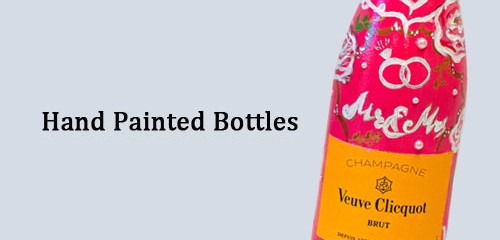
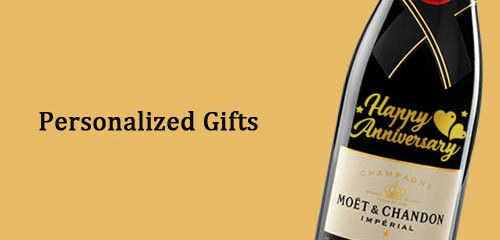
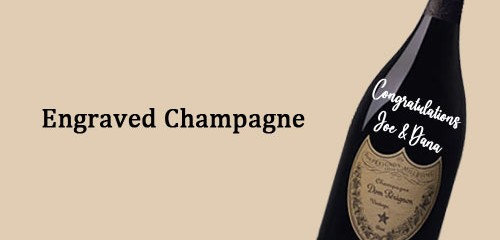








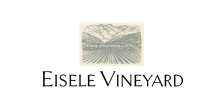

















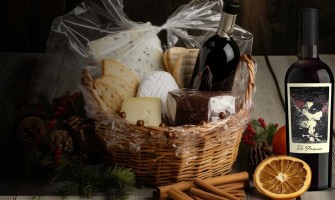
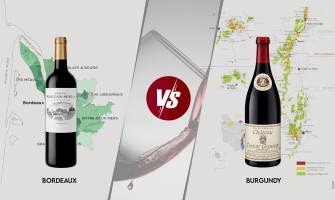


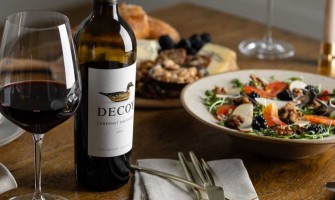
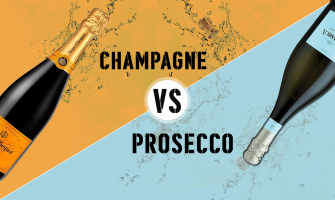






Leave a Comment